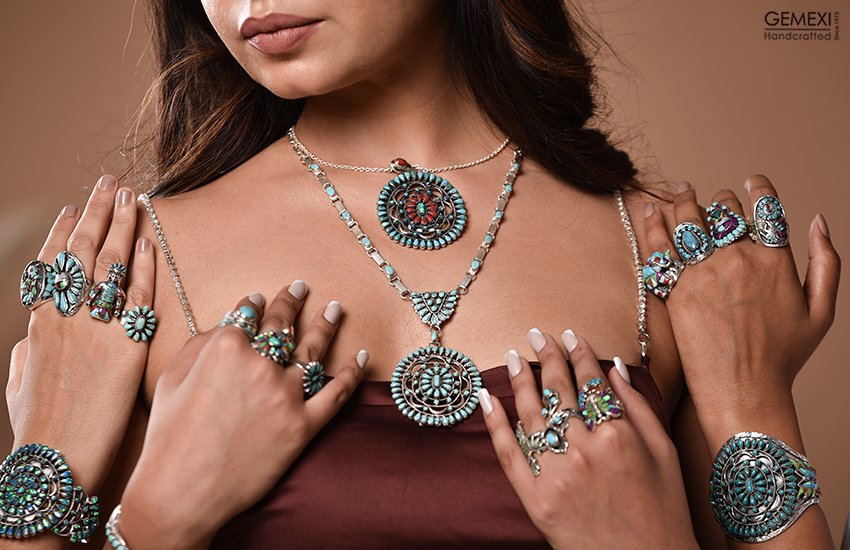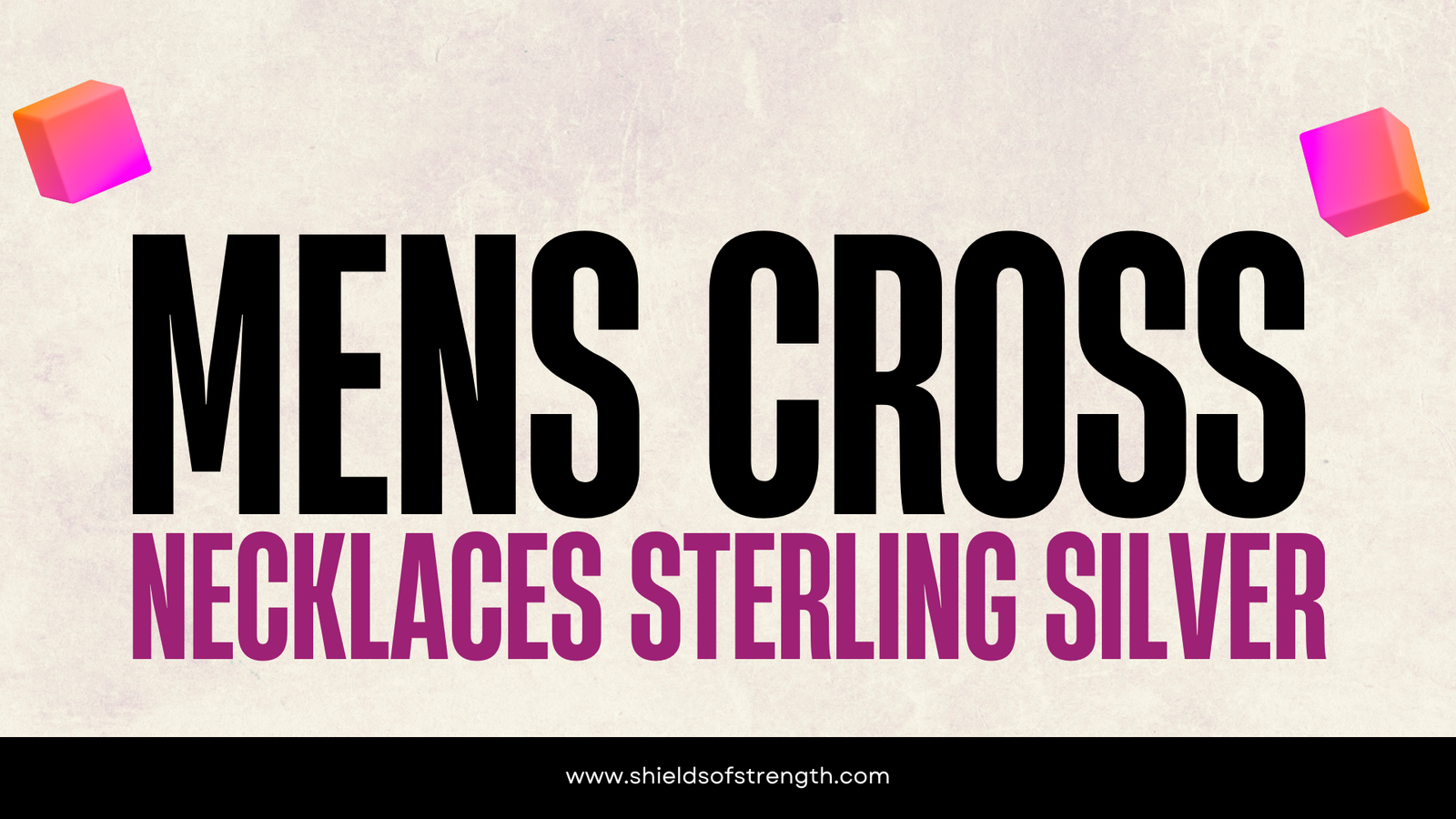Turquoise has long been prized for its unique beauty, especially when paired with silver in jewelry design. Whether you’re an enthusiast of Southwestern style or simply love the vivid color of turquoise, this complete guide explores the different types of turquoise used in silver jewelry and how to choose the perfect piece.
Introduction to Turquoise and Silver Jewelry
Turquoise is one of the oldest known gemstones, with its striking blue and green hues making it a favorite for centuries. It’s often found in silver settings, which enhance its natural beauty and durability.
Significance of Silver in Jewelry
Silver, with its cool luster and malleability, has been used for centuries as a setting for gemstones. Its reflective qualities make it the perfect backdrop for vibrant stones like turquoise, allowing the color to pop. It’s also more affordable than gold, making it a popular choice for those looking to balance beauty and budget.
The History of Turquoise in Jewelry
Ancient Use of Turquoise in Various Cultures
Turquoise has been cherished by many ancient civilizations, including the Egyptians, Native Americans, and Persians. In Ancient Egypt, turquoise was believed to offer protection and was often used in amulets. Native Americans used it in ceremonial and ornamental pieces, while Persian culture revered it for its vibrant hue, associating it with the heavens.
Evolution of Turquoise in Modern Jewelry
In the 20th century, turquoise became particularly popular in the Southwestern United States, where indigenous peoples integrated it into their traditional silverwork. This trend continues today, with turquoise and silver remaining a quintessential pairing in Southwestern jewelry design.
Why Turquoise and Silver are a Popular Combination
Symbolism of Turquoise
Turquoise is often associated with calmness, protection, and wisdom. Many cultures believed it could ward off negative energy and bring good fortune. Its serene blue tones evoke the sky and the sea, enhancing its symbolism of peace and tranquility.
Benefits of Silver in Jewelry Making
Silver’s affordability, durability, and visual appeal make it a prime metal for jewelry making. It complements turquoise perfectly, without overpowering its natural color. Additionally, silver’s hypoallergenic properties ensure it’s suitable for most skin types.
Different Types of Turquoise in Silver Jewelry
Turquoise comes in a wide variety of shades and patterns, each with its own unique appeal. Let’s dive into the different types of turquoise commonly found in silver jewelry.
Blue Turquoise Varieties
- Persian Turquoise: Known for its deep sky-blue color, Persian turquoise is some of the most highly sought-after and often free of matrix (the dark lines or veins). This makes it extremely valuable in the jewelry world.
- Sleeping Beauty Turquoise: Found in Arizona, this type is known for its robin’s egg blue color and minimal matrix. It’s one of the most popular turquoise varieties in modern jewelry design.
Green Turquoise Varieties
- Royston Turquoise: This Nevada-based turquoise is famous for its rich green tones, often with brown or golden matrix. The contrast between the green stone and the silver setting makes for stunning pieces.
- Nevada Green Turquoise: Another popular variety from Nevada, this turquoise ranges from pale green to dark olive. The distinct earthy tones make it a favorite among those who prefer subtler gemstone colors.
Factors That Affect Turquoise Color and Quality
Turquoise color can vary widely depending on several factors:
- Mineral Composition: Copper is the main element responsible for turquoise’s blue color, while the presence of iron can give it a green hue.
- Environmental Factors: The geographical location where turquoise is mined can also affect its color, with drier climates producing lighter hues and wetter areas generating darker shades.
Turquoise Quality Grading
Not all turquoise is created equal, and its value is largely determined by its quality.
- High-Grade vs. Low-Grade Turquoise: High-grade turquoise is often vibrant in color, has little matrix, and is harder, making it more durable. Low-grade turquoise, on the other hand, is often pale or chalky and requires stabilization to be used in jewelry.
- Stabilized vs. Natural Turquoise: Stabilization is a process where low-grade turquoise is treated to enhance its durability and color. While this makes the stone more affordable, natural turquoise is often more prized for its purity.
Popular Turquoise Mines and Their Unique Characteristics
Mines in the USA
- Kingman Mine: Located in Arizona, this mine produces a vibrant blue turquoise with striking black matrix.
- Bisbee Mine: Known for its hard, high-quality turquoise with deep blue hues and distinctive chocolate brown matrix, Bisbee turquoise is a collector’s favorite.
International Mines
- Iran (Persian Turquoise): The Persian region is famous for producing some of the world’s finest turquoise, known for its bright blue, often matrix-free stones.
- China: Chinese turquoise, though less famous, can vary in color from light blue to green and is often used in more affordable jewelry.
How to Identify Real vs. Fake Turquoise
With turquoise’s popularity, imitation stones are common. How can you tell if it’s the real deal?
- Common Misconceptions: Many assume that vibrant color always means natural turquoise. However, dyed howlite is a common substitute.
- Spotting Imitations: Real turquoise is porous and often has slight imperfections, while fakes are smooth and overly uniform in appearance. Scratching the surface gently with a pin can sometimes reveal dyed materials underneath.
Caring for Turquoise and Silver Jewelry
Turquoise is relatively soft compared to other gemstones, so proper care is crucial.
- Cleaning and Storing Tips: Use a soft cloth to clean your turquoise and avoid chemicals or ultrasonic cleaners. Store it away from other jewelry to prevent scratches.
- Preventing Tarnish on Silver: Silver tarnishes over time, so keep your pieces in a cool, dry place and polish them regularly with a silver cleaning cloth.
The Cultural and Spiritual Meaning of Turquoise
Turquoise holds significant cultural and spiritual value around the world.
- Healing Properties of Turquoise: It’s believed to have healing properties, aiding in emotional balance and providing physical protection.
- Spiritual and Symbolic Uses: Many believe turquoise fosters creativity and communication, making it a popular choice for artists and spiritual practitioners.
Turquoise in Modern Jewelry Design
While turquoise has ancient roots, it’s far from outdated.
- Contemporary Trends: Today’s jewelry designers mix turquoise with other gemstones and metals to create bold, eclectic pieces.
- Iconic Designers Using Turquoise: Designers like Charles Loloma and Carolyn Pollack have elevated Number 8 Turquoise jewelryto new heights, making it a staple in fashion collections.
Investment Value of Turquoise in Silver Jewelry
As with many gemstones, turquoise’s value fluctuates based on market demand and rarity.
- Market Demand: High-quality turquoise from well-known mines tends to hold its value or even appreciate over time.
- Factors Influencing Value: The origin, color, matrix pattern, and treatment (natural vs. stabilized) all play a role in determining the stone’s worth.
How to Style Turquoise and Silver Jewelry
Turquoise jewelry is versatile, suiting both casual and formal looks.
- Casual vs. Formal Looks: For a casual look, layer turquoise necklaces with simple silver chains. For formal occasions, pair a statement turquoise ring or pendant with neutral-toned clothing.
- Color Pairings: Turquoise pops against black, white, and earthy tones like brown or beige.
Sustainable and Ethical Sourcing of Turquoise
As consumers become more conscious of their purchases, ethical sourcing of gemstones is increasingly important.
- Ethical Mining Practices: Look for jewelry from mines that prioritize environmentally-friendly extraction methods.
- Ensuring Fair Trade: Supporting jewelers who use fair trade practices ensures that miners and artisans are paid fairly for their work.
Conclusion
Turquoise in silver jewelry offers a timeless appeal that transcends trends. Whether you’re drawn to its spiritual significance or simply love the striking beauty of the stone, turquoise has a long-standing place in the world of fashion. With the right care and knowledge, you can invest in a piece of jewelry that will last a lifetime.



